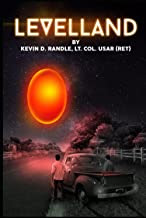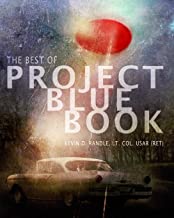Proponents of the extraterrestrial theory for UFOs are not the only ones who had a pet and somewhat meaningless phrase. Debunkers ofter claim that “Extraordinary claims require extraordinary evidence.” They trot this out when it begins to look as if some of the evidence does support the idea of alien visitation. That the evidence isn’t overwhelming isn’t really the point here but this phrase is often used to belittle any solid evidence or ignore it completely.
It can be argued that a claim of alien visitation is extraordinary and to prove it there must be some very persuasive evidence. Two or three, or a dozen people standing around and seeing a light in the sky that seems to move with great speed, maneuver in a way that defies physics as we understand it, and then disappears “like a light being extinguished,” certainly isn’t extraordinary evidence. There are too many other explanations for that sighting including illusion.
In fact, sighting reports in and of themselves will probably never be sufficient to prove alien visitation. Even if those making the observations are classified as “trained observers” meaning scientists, or police officers or military and civilian pilots, or a combination of all three, it is still just a sighting. When everything is examined, the report is still just the observations of those men and women and certainly open to interpretation.
What is needed are observations that are accompanied by other types of evidence. What is needed are chains of evidence independent of one another. A photographic case that is witnessed by several, with radar or other instrumentality involved, and maybe landing traces, or bits of debris that seem to defy an earthly origin would be perfect. What is needed is a scientific study of a case that mirrors that done in the early nineteenth century by Jean-Baptiste Biot. He was the French scientist who put together a study of a fireball that had fallen in France about three weeks before he initiated his investigation and changed the science of the time.
He did interview witnesses about what they had seen. He didn’t reject them simply because they were poor, uneducated, or rural. He didn’t reject them because they were not scientifically trained observers. He took down all the eyewitness accounts that he could.
But he also gathered physical evidence in the form of the rocks that were alleged to have fallen from the sky. Under analysis, he was able to establish that they were unlike the other geological samples from the region and that they had been introduced at some point after a recent survey of the minerals had been completed. They must have arrived as the witnesses claimed. They must have fallen from the sky.
He was able to reverse the scientific thought of the time and convince his colleagues that rocks did fall from the sky. His evidence was not extraordinary. It was eyewitness testimony and an analysis of the rocks that had fallen based on that witness testimony.
In the world of UFO, we begin the fight with the vast distances encountered among the stars. Everyone, it seems, agrees with the idea that there is life out there in the universe somewhere and some of it is intelligent. But then there are those who tell us that even with that, these alien races have not solved the problem of interstellar flight because, if they had, well, they would be here by now.
When we suggest that Earth has been visited, we are told that “extraordinary claims require extraordinary evidence,” and then dismiss everything that has been gathered as if it were not evidence, or, at least does not rise to the level of extraordinary evidence.
Okay, I can stipulate that much of the evidence has been poorly gathered. I can stipulate that the personal belief structures and the biases of those gathering the data come into play. I can even stipulate that many of those who have gathered the data were unfamiliar with the rules of evidence and scientific observation. But I will also note that some of those who complain about those of us who believe aliens have visited have done much to inhibit the gathering of proper data.
What do I mean?
Philip Klass routinely called the employers of witnesses, or investigators, of lecturers and researchers, and told them that their employees believed in alien visitation. He sometimes compared them to communists. He told half-truths about them. He attempted to silence them for reasons I do not now, and have not, understood. He wasn’t arguing evidence but attempting to silence these people through intimidation.
Klass would call venues hosting UFO conferences and suggest these same things, sometimes forcing the venue to be changed at the last minute. Klass, in fact, attempted to inhibit UFO investigation and once accused James McDonald of using government money to chase UFOs. The allegation was untrue but it caused McDonald a great deal of personal anguish and to what end? It didn’t stop the investigations and it might lead to an even more sinister consequence.
Klass wasn’t the only villain in this. The Air Force had a hand in it, though their role was never so outrageous. The official spokesmen, or those at Project Blue Book spokesman, believed the Air Force was wasting resources to investigate UFOs. They paid lip service to the idea of investigation and worked to avoid having to study the question. Documentation has been found that underscores that bit of reality.
How do I know?
The Levelland UFO case is illustrative. Here was a case that might have met this mythical idea of extraordinary evidence if it had been investigated properly at the time. It had multiple chains of evidence with many witnesses found at thirteen separate locations. In many of those locations there were multiple witnesses. There was evidence that the UFO interacted with the environment in a way that could be calibrated. There is even a hint of a landing trace which meant there would be physical evidence of the UFO’s presence. Or, at the very least, indirect evidence.
And what happened?
The Air Force almost called Major Donald Keyhoe, the director of the National Investigations Committee on Aerial Phenomena a liar for what he said about the Levelland UFO reports. Air Force spokesmen said that Keyhoe had claimed nine witnesses but their investigator had found only three. My point in today’s world is that I was able to identify many more showing both the Air Force and Keyhoe were wrong. Both underestimated the number of witnesses but both were too busy arguing this unimportant point to get to the heart of the matter.
Without going into detail about the case, we have sightings by law enforcement officers, travelers, ranchers, and a host of others. They reported that a close approach of the craft stalled their vehicles, dimmed their lights, and filled their radios with static. Not just one or two of these witnesses, but all of them at all the separate locations. All talked about this prior to news coverage and without consultation with witnesses at the widely scattered locations.
But no one was really investigating this case. The Air Force NCO sent in spent a day talking with three witnesses and if a witness did not talk to the Air Force, then that witness did not exist. Even with the suggestion that UFO could suppress the electrical fields around vehicles, the Air Force didn’t pursue the investigation. I would think that the weapon potential would have been obvious to anyone in a military arena and that should have interested them. Today we call that the electromagnetic pulse or EMP.
Don Burleson, a UFO researcher from Roswell, New Mexico, which is some three hours from Levelland, said that about a decade ago he talked to the daughter of the Levelland sheriff. According to that information, the sheriff was more deeply involved than he let on in 1957 and according to her, knew of a burned area on a ranch. Who knows what sort of evidence might, and I stress the might, have been found if properly investigated in 1957? Today this information, while interesting, is useless. We don’t have anything from the sheriff, there is nothing to see there, and we’re dealing with, at best second hand information. We’re only forty or forty-five years too late.
But here was a chance to learn something important. Here was a chance to pursue those multiple chains of evidence. Here was a chance to gather, within hours of the event, the observations of those involved. Here was a chance, a possible chance, to gather physical evidence. And in the end, it was lost because of a disbelief by those in charge of the Air Force investigation and a fight over how many witnesses there really were.
It is possible that the extraordinary evidence might have been gathered at this point. We don’t know because no one actually attempted to gather it at the time.
There are other cases that present these sorts of opportunities. The McMinnville pictures of 1950 show some sort of object that is not of obvious origin. There are the photographs that are available for analysis. There is the witness testimony. There are not a horde of witnesses, but there were two known and a possibility of a couple of others. This seems to be a case that is either of something not of terrestrial manufacture or it is a hoax. Maybe not extraordinary evidence but certainly interesting evidence suggestive of something that borders on the extraordinary.
There are the Washington National UFO sightings from July 1952. The Air Force eventually claimed that they were the result of temperature inversions over Washington, D.C. But there were sightings by civilian pilots, by military pilots, by witnesses on the ground, and importantly, radars. In one case, radars at three separate locations showed the objects. Multiple chains of evidence that suggested something extraordinary, but a case that was labeled quickly and forgotten.
My point here, however, is that each time we suggest a case has some interesting elements, we are reminded that “extraordinary claims require extraordinary evidence.” I suspect, however, that if we produced an alien ship, there would be those who would believe that we whipped it up in a lab just to prove our point. There are people who argue that no man has ever walked on the moon. There are those who deny everything and base their denials on personal belief rather than evidence review.
But trotting out the argument doesn’t really provide much of an answer. It is a fall back position that allows the user to take what he or she believes to be the scientific high ground, and reject everything that is offered. Nothing will ever meet this arbitrary standard of extraordinary evidence. No matter what is offered, it will not be extraordinary enough. Just as some say, “Absence of evidence,” we have those at the opposite end of the spectrum saying, “Extraordinary claims...”
I merely suggest that we not allow ourselves to be diverted by propaganda such as this. Yes, we must improve our methodology, yes we must improve our techniques, and no, we really don’t need more sighting reports. What we must do is gather the evidence in a professional manner and present it in a professional manner. Once we do that, we can get away from the propaganda machine and just maybe learn a thing or two.
























